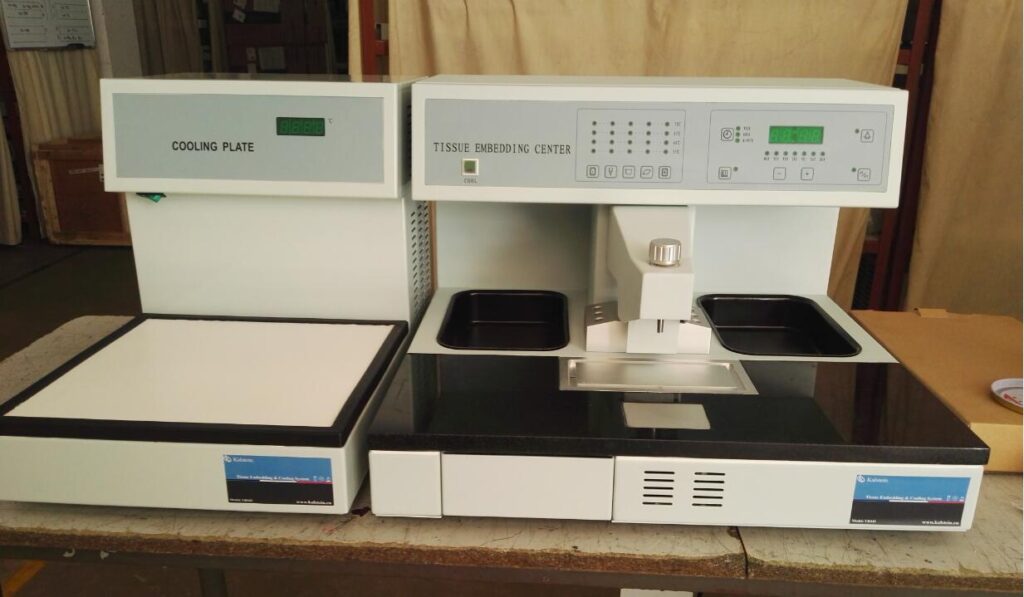Pathological anatomy is the science that is responsible for the study of pathophysiological and morphological alterations of the disease. Like all science, it has a series of specialized equipment to carry out the different studies on which it is based.
A tissue processor is a piece of equipment used in pathological anatomy laboratories to analyze and process tissue samples by fixing, staining, dehydrating or decalcifying them. This equipment is designed to process tissues extracted from the body for the diagnosis of pathological processes and to produce samples that can be analyzed microscopically.
These equipments have extensive programming possibilities for processes of fixation and dehydration of histological samples with reagents and their subsequent infiltration in paraffin. They provide security when processing, allow you to handle a greater number of samples, process more quickly and produce better quality results.
Types of tissue processors
Tissue transfer processors
These processors are characterized by the transfer of tissues, contained within a basket, through a series of stationary reagents arranged in line or in a circular carousel plane. Agitation of the fluid is achieved by vertical oscillation or rotary movement of the tissue basket.
Fluid transfer processors
In fluid transfer units, the processing fluids are pumped to and from a retort in which the tissues remain stationary. There are 10-12 reagent stations with adjustable temperatures between 30-45 ° C, 3-4 paraffin wax stations with variable temperature settings between 48-68 ° C, and vacuum pressure options for each station.
Benefits of owning an automatic tissue processor
- Tissue processors minimize the risk of inappropriate handling through automation, while increasing efficiency, ensuring process replication at any time.
- With these tissue processors there is a considerable reduction in processing time. With minimal user interaction, from the start of sample processing and until resin embedding.
- Automatic tissue processing minimizes contact with hazardous reagents, provides reproducible results, reduces time, and improves user safety in the laboratory. The tissue processor, designed for resin processing, has an exhaust system that allows toxic substances to be used more safely.
- Most modern fluid transfer processors employ elevated temperatures, effective fluid circulation, and incorporate vacuum / pressure cycling to improve processing and reduce processing times.
At Kalstein we are MANUFACTURERS and we put at your disposal innovative fabric processors of the highest quality and at the best PRICES on the market. That is why we invite you to take a look HERE

